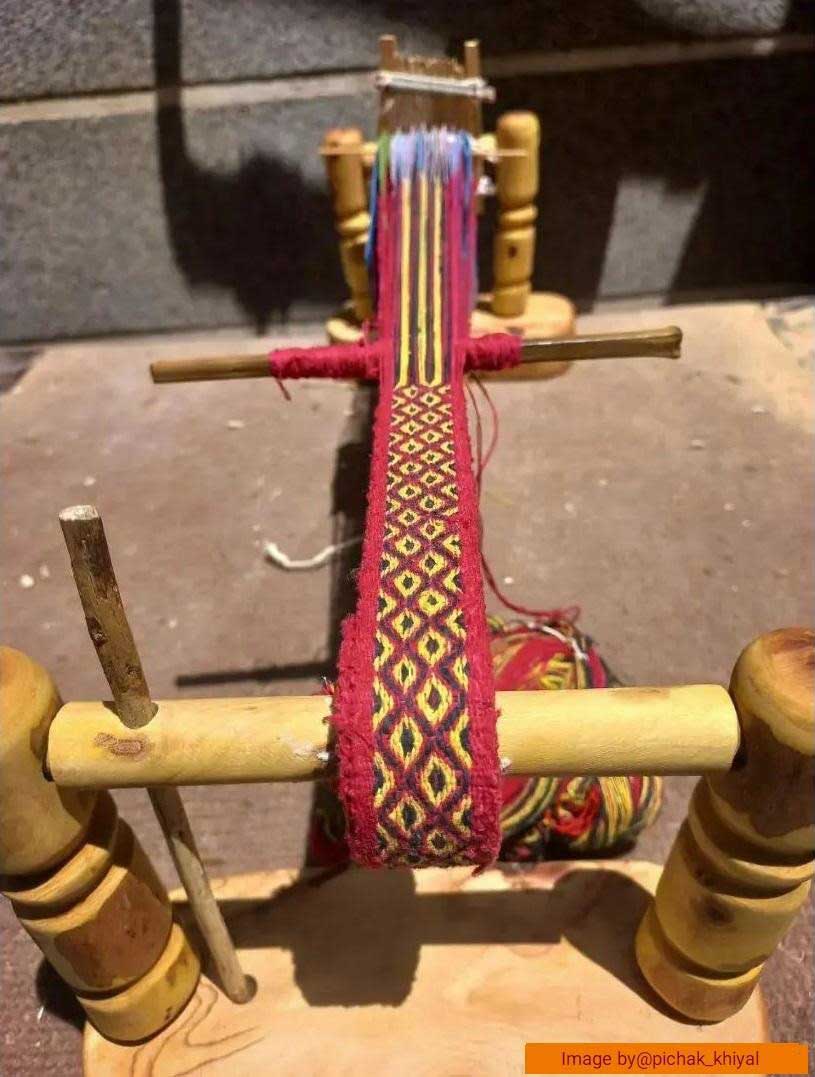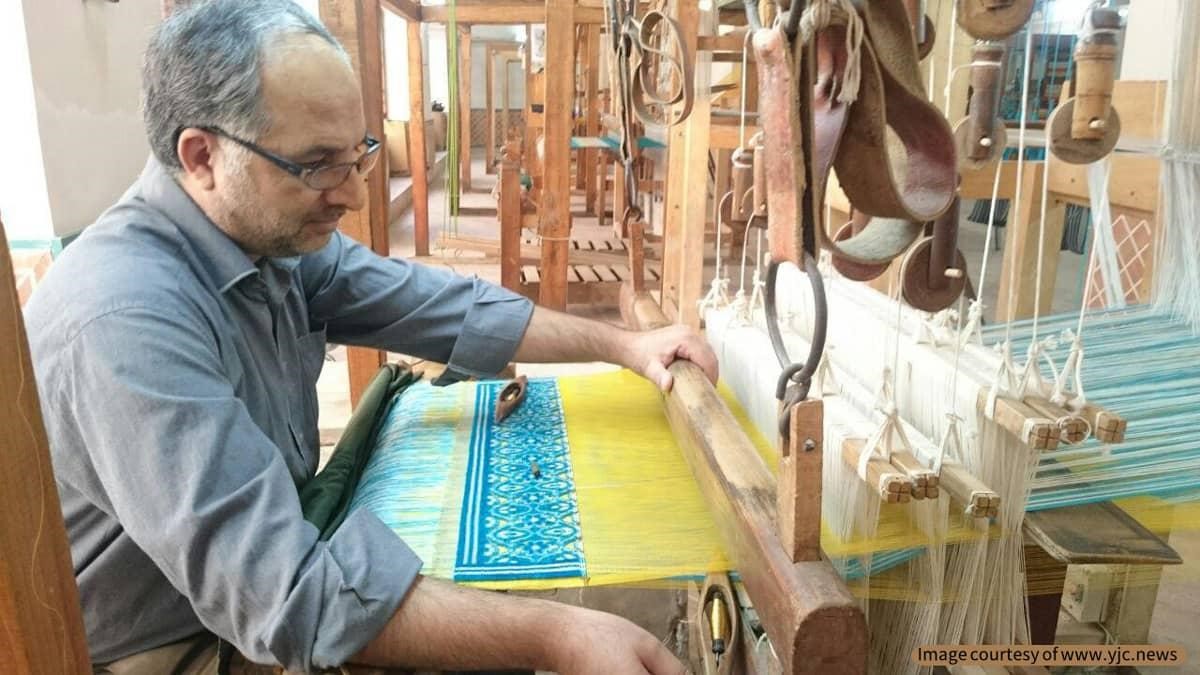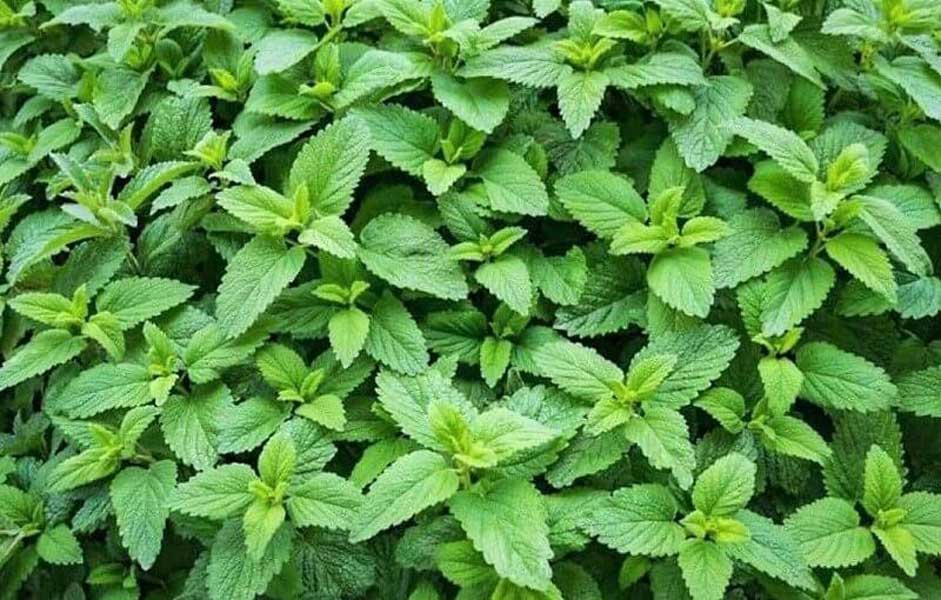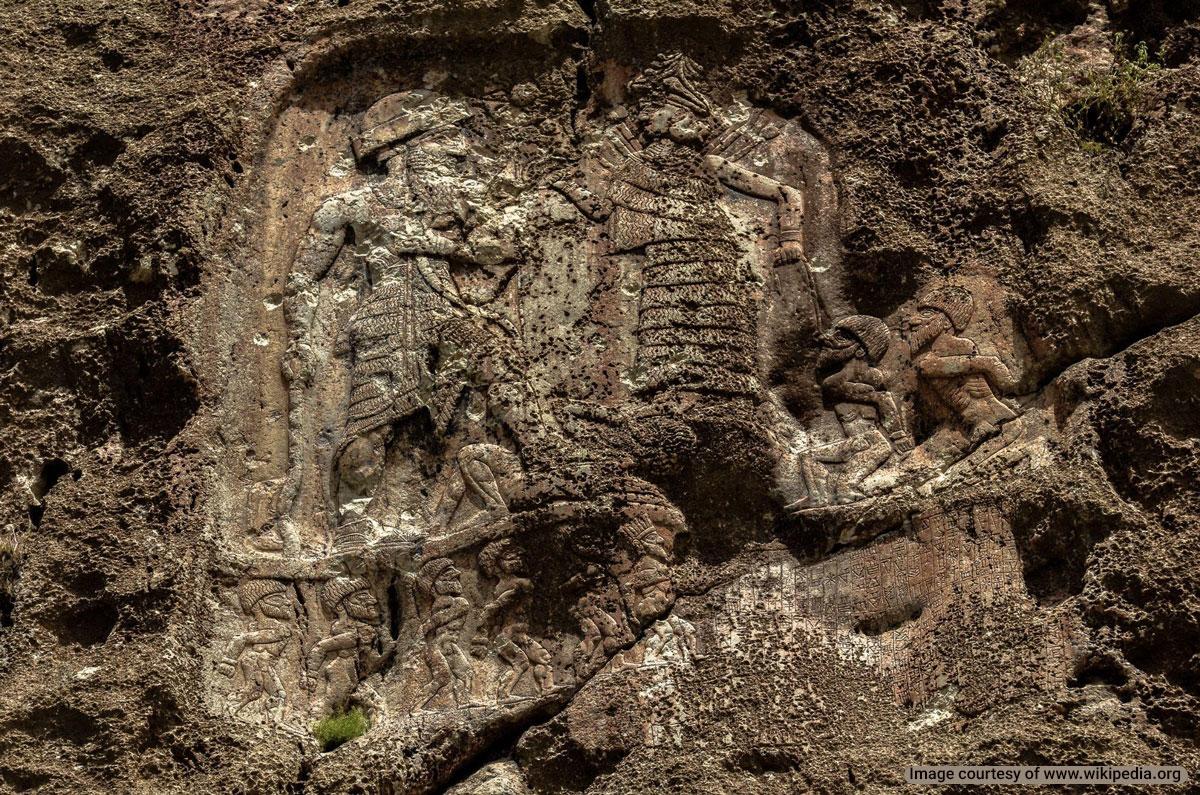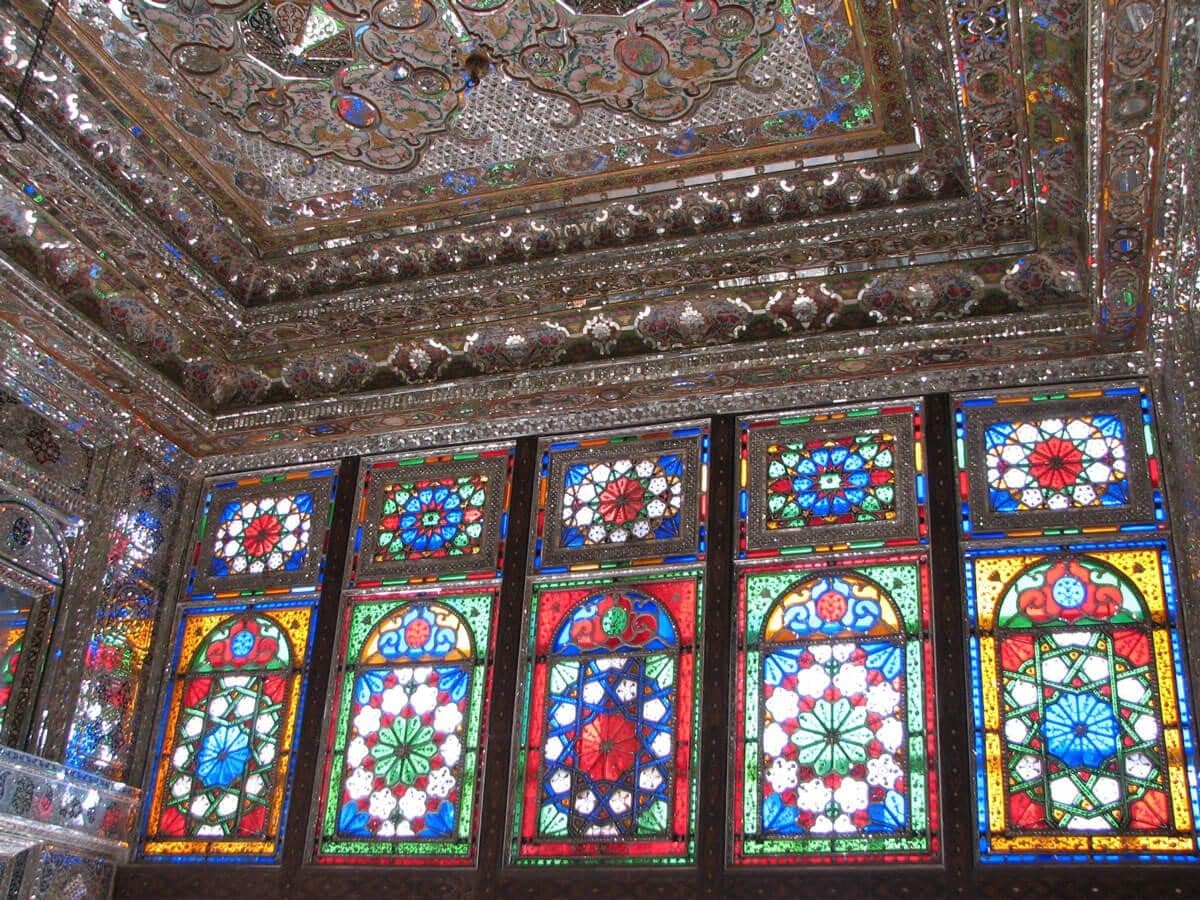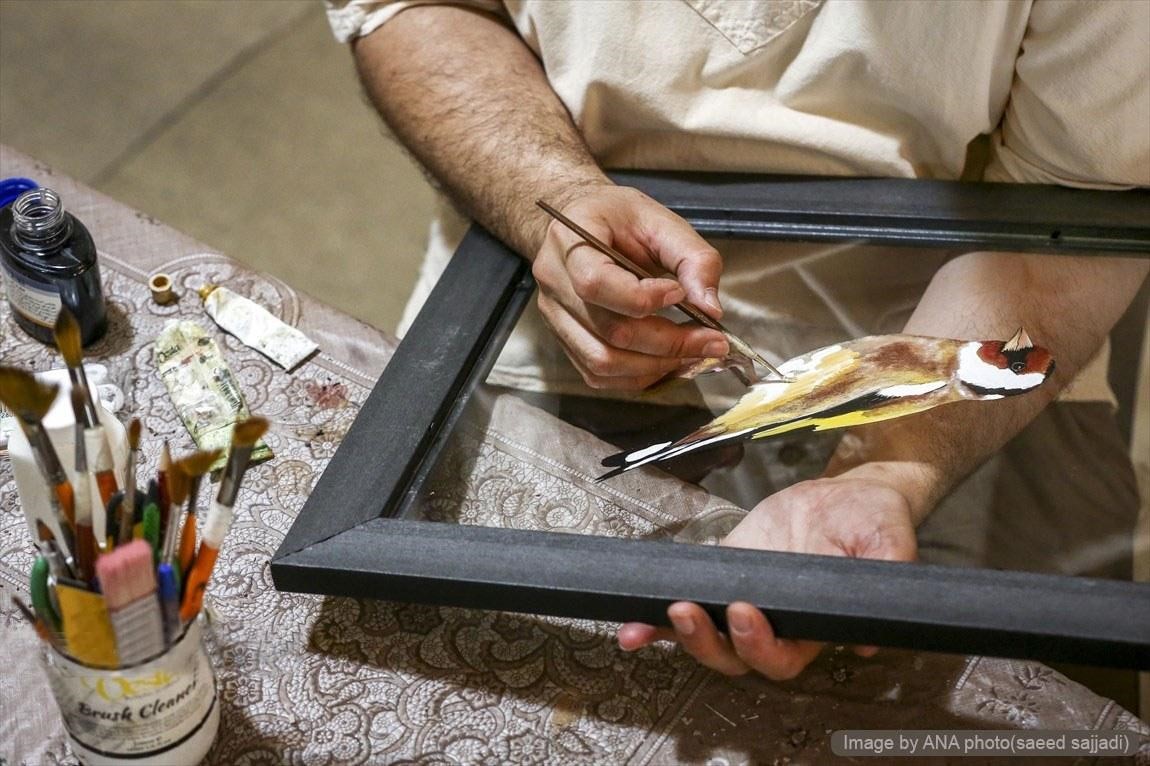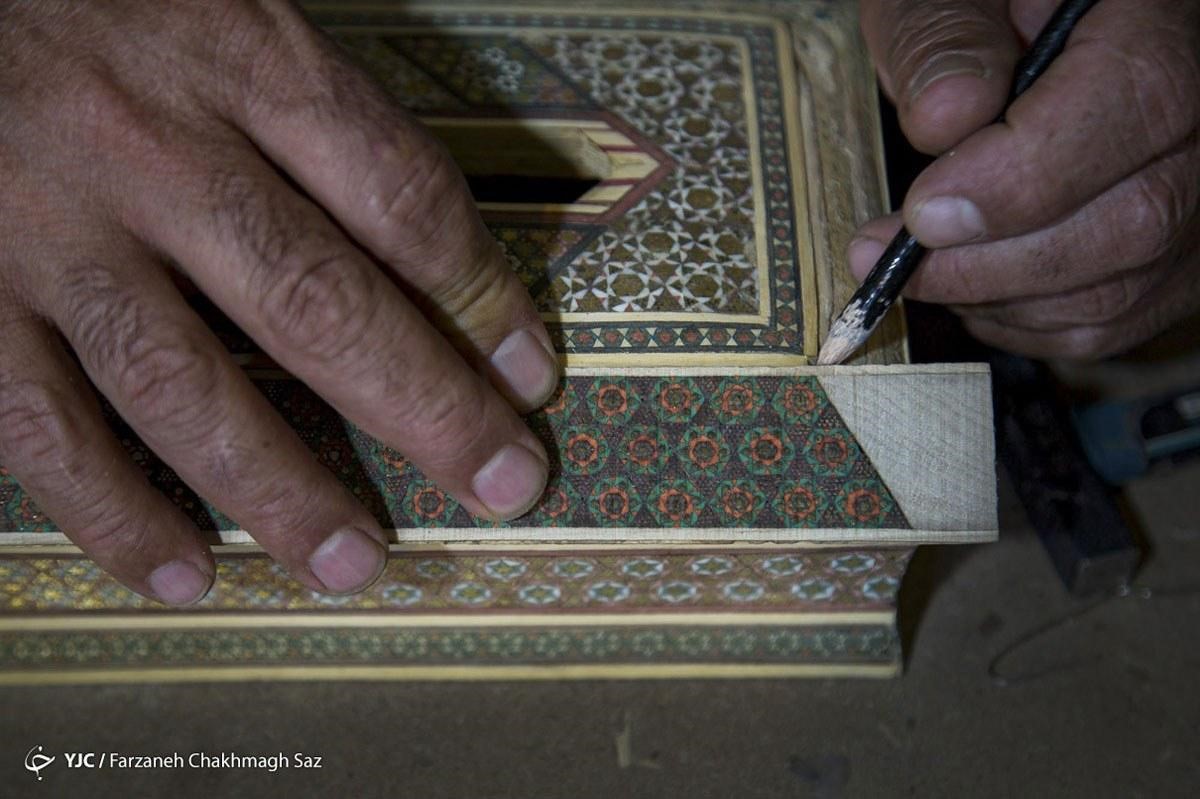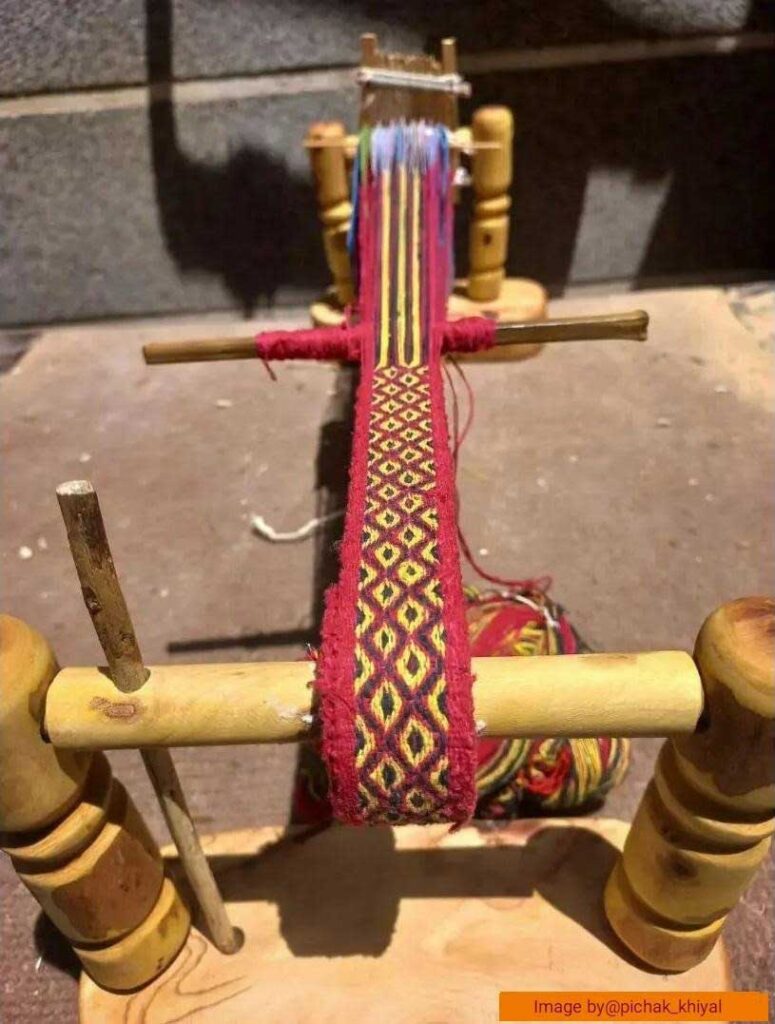
The art of band weaving in Iran has been traced back to the end of the third and early second millennium BC. This art is known by various names in the classifications of Iran Handicrafts: in Chaharmahal and Bakhtiari “Veris Weaving”, in Qazvin “Pan Weaving”, in Khorasan and Lorestan “Modakheleh Weaving” (intertwined weaving) and in Bandar Abbas “Shak Weaving”.
What is Band Weaving?
Ribbon weaving is an ancient Iranian handicraft that uses square and triangle shaped cards as a frame to weave all kinds of bands. For this reason, it is also called “card weaving”.
In the past, these cards were made of deer skin or wood, but modern band weaving practices use tablets or crochet hooks.
A band weaving card has the same function as a roller in a textile machine. In fact, card weaving or tablet weaving is a simple method for weaving narrow pieces of fabrics one to three centimeters wide.
Traditional Band Weaving
Two types of bands were woven in traditional tape weaving workshops, categorized by the yarn type and the band’s thickness, and they had different uses:
- The thick bands are woven with goat and sheep hair, white cotton threads, and hand-spun wool yarn. These bands were used to tie nomad tents, make camel and horse bridles, horse visors, muzzles, breastbands, and animal harnesses.
- The thin bands are woven with silk yarns and silk Golabetoon (braid covered with gold and silver threads). These bands were used to decorate clothes and table cloths, make glasses strips, bracelets, Quran markers and napkins.
History of Band Weaving in Iran
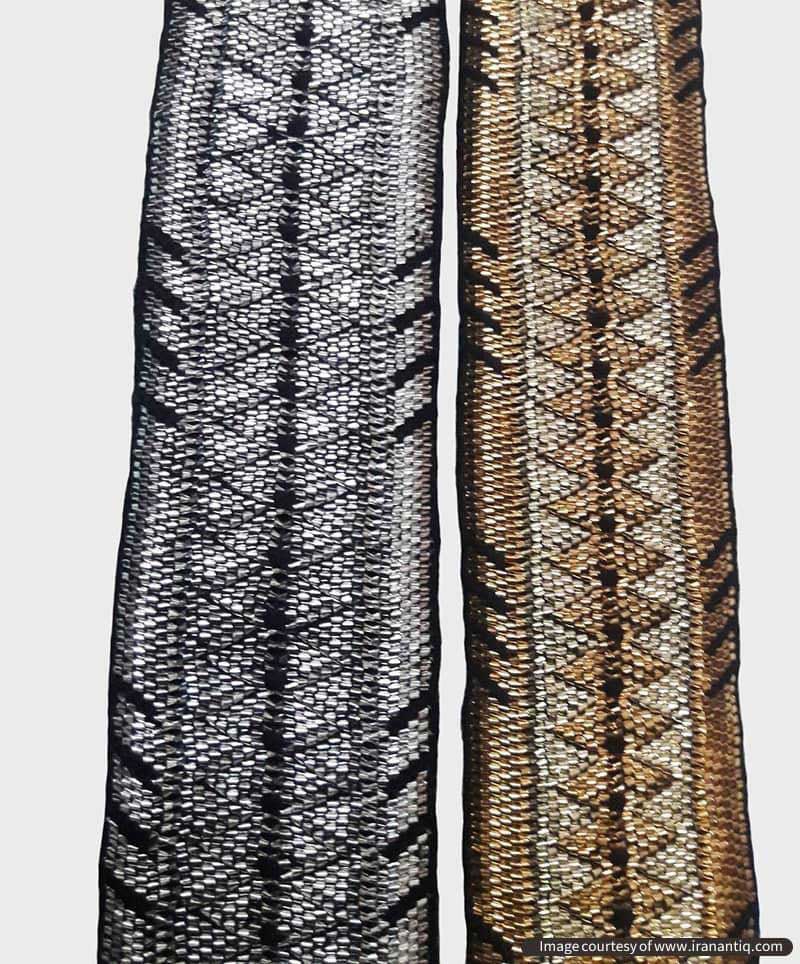
The history of band weaving, one of the most famous traditional Iranian handicrafts, dates back to the late third millennium and early second millennium BC. Two archaeologists, Roland de Mecquenem and Georges Contenau, have documented the ancient history of band weaving in Iran in their archaeological findings in Susa.
They also discovered a tablet in the shape of a triangle in Susa, which was pierced with three holes. In addition to this triangular tablet, 40 other rectangular tablets made of elephant ivory were discovered on site. Round and square weaving cards were also found in the city of Susa, which were made of limestone.
Parthians used handwoven bands as headbands. They tied the headbands behind their head with the other end hanging behind their head.
During the Safavid era, traditional band weaving practices were carried out with high quality and excellent designs. Safavid-era band weaves were double-sided and the bands had denser weaves with more layers.
Traditional Band Weaving Color Palette
Traditional band weaving utilizes special colors. In most band weaving cultures, red and black hold a special place. While in the royal and elite bands, we see the use of the golden color, which were weaved using gold and silver threads.
Band Weaving with Modern Crochet Hooks
Today, band weaving in Iran is practiced in both traditional and modern methods, but bands can also be woven using a crochet hook. These band strips are used for collar lines, bottom lines, sleeve lines, different parts of embellishments and other components. Band weaving with crochet hook is also known as crochet looming.
Modern Band Weaving in Iran
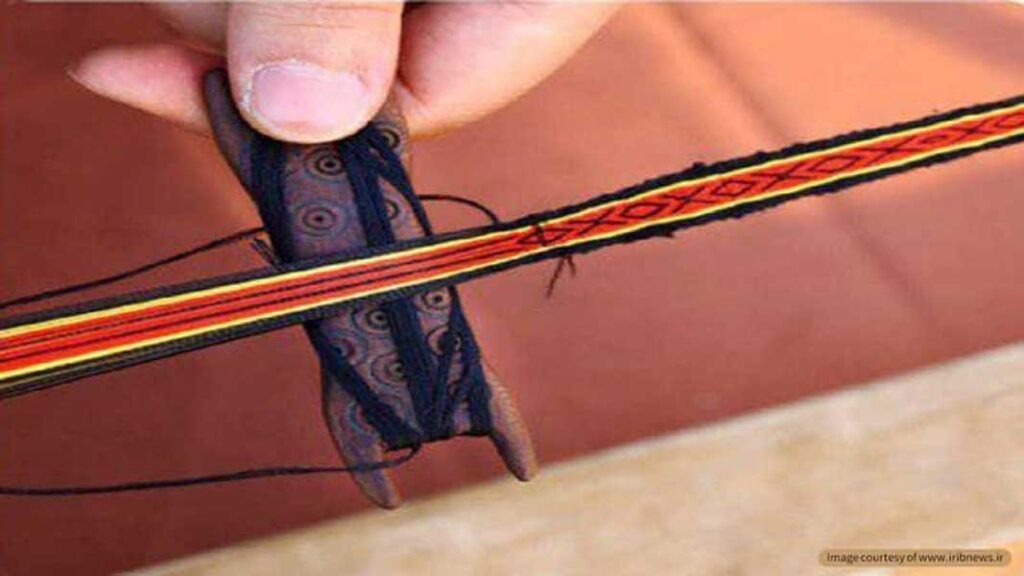
Modern band weaving practices in Iran are slightly different from traditional band weaving, but there are small yet active band weaving workshops. Here is a short list of Iranian cities famous for modern band weaving:
Tehran Band Weaving
As time progressed and brought about scientific and technological advancements, traditional band weaving methods were replaced with industrial practices. Currently, Tehran’s band weaving industry is one of the centers of textile band production in Iran and there are many factories in and around Tehran that produce fabric bands on a large scale.
Tabriz Band Weaving
In recent years, industrial band weaving has grown into a booming business in Tabriz. Various band weaving machinery weave curtain tapes, mattress tapes, waistbands, etc. These machines can implement different designs and colors in band weaving.
Isfahan Band Weaving
Band weaving in Isfahan, like Tehran and Tabriz band weaving, has gained its share of reputation. There are all types of thick and thin bands in Isfahan with different designs such as needled, straw, double-layered, belt and Tifuri. These bands are used in the production of bags, shoes, slipper straps, mats, horse accessories, backpacks, wicker weaving, etc.
Visit Traditional Band Weaving Workshops in Iran
In line with our goal of promoting conscious tourism principles, Destination Iran suggests visiting traditional band weaving workshops on your travels and buying their products to support local economies. Buying traditional handicraft products helps independent business owners and ensures the survival of these workshops as part of Iran’s cultural heritage.






